| Date | Text | |
|---|---|---|
30 Nov 1908
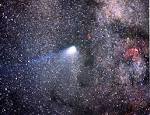
Comet Halley |
Comet Halley (astronomy) Comet Halley first becomes visible on a photographic plate. |
|
30 Nov 1908

Fritz Haber |
Fritz Haber (chemistry) Fritz Haber and Carl Bosch first demonstrate the Haber process, the catalytic formation of ammonia from hydrogen and atmospheric nitrogen under conditions of high temperature and pressure. |
|
30 Nov 1908
![p[H] p[H]](/img/names/ANd9GcSjtWhI3Cs2W1-4ton_Q5ZD3NzMcDyEnHeRDx8Eu-EBZjs85UUcetRNKo8.png)
p[H] |
p[H] (chemistry) The concept of p[H] as a measure of the acidity or basicity of an aqueous solution is introduced by Danish chemist Søren Peder Lauritz Sørensen at the Carlsberg Laboratory. |
|
30 Nov 1908

L. E. J. Brouwer |
L. E. J. Brouwer (mathematics) L. E. J. Brouwer makes a proof of the Brouwer fixed point theorem. |
|
30 Nov 1908

Brazilian |
Brazilian (medicine) Brazilian physician and infectologist Carlos Chagas first describes Chagas disease. |
|
30 Nov 1908

psychology |
psychology (medicine) In psychology, Edward B. Titchener makes the first published coinage of the term Empathy as a translation of the German Einfühlungsvermögen. |
|
30 Nov 1908
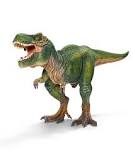
dinosaur |
dinosaur (paleontology) Excavation of the dinosaur bone beds at what will become Dinosaur National Monument in the Uinta Mountains of the United States by paleontologist Earl Douglass working for the Carnegie Museum of Natural History. |
|
30 Nov 1908
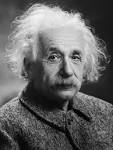
Albert Einstein |
Albert Einstein (physics) Albert Einstein together with Marcel Grossmann starts to develop a theory which would bind metric tensor gik, which defines a space geometry, with a source of gravity, that is with mass. |
|
30 Nov 1908

Hans Geiger |
Hans Geiger (physics) Hans Geiger and Ernest Marsden discover large angle deflections of alpha particles by thin metal foils. |
|
30 Nov 1908

Ernest Rutherford |
Ernest Rutherford (physics) Ernest Rutherford and Thomas Royds demonstrate that alpha particles are doubly ionized helium atoms. |
|
30 Nov 1908
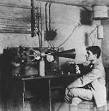
Einar Dessau |
Einar Dessau (technology) Einar Dessau uses a short-wave radio transmitter becoming the first radio broadcaster. |
|
30 Nov 1908

Kinemacolor |
Kinemacolor (technology) Kinemacolor, the first commercial "natural color" system for movies is invented. |
|
30 Nov 1908

Clare Island Survey |
Clare Island Survey Commencement of fieldwork for the multidisciplinary Clare Island Survey (Ireland), under the direction of Robert Lloyd Praeger. |
|
05 Jan 1909

Stephen Cole Kleene |
birth Stephen Cole Kleene Stephen Cole Kleene (died 1994), American mathematician. |
|
12 Jan 1909
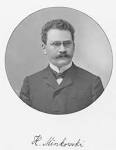
Hermann Minkowski |
death Hermann Minkowski Hermann Minkowski (born 1864), mathematician. |
|
16 Jan 1909
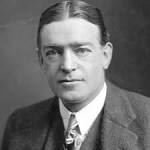
Ernest Shackleton |
Ernest Shackleton (earth sciences) Ernest Shackleton's expedition locates the South Magnetic Pole. |
|
05 Feb 1909

Leo Baekeland |
Leo Baekeland (chemistry) Leo Baekeland announces the creation of the early plastic Bakelite, a hard thermosetting phenol formaldehyde resin, to the American Chemical Society. |
|
09 Feb 1909

Giulio Racah |
birth Giulio Racah Giulio Racah (died 1965), Italian–Israeli mathematician and physicist. |
|
18 Feb 1909

Warren Elliot Henry |
birth Warren Elliot Henry Warren Elliot Henry (died 2001), African American physicist. |
|
26 Feb 1909

Hermann Ebbinghaus |
death Hermann Ebbinghaus Hermann Ebbinghaus (born 1850), psychologist. |
|
22 Mar 1909

Nathan Rosen |
birth Nathan Rosen Born 22 Mar 1909; died 18 Dec 1995 at age 86. American-Israeli theoretical physicist who in 1935 collaborated with Albert Einstein and Boris Podolsky on a much-debated refutation of the theory of quantum mechanics; he later came to accept the theory. The famous Einstein-Podolsky-Rosen critique of quantum mechanics was published in the 1935 Physical Review. (A New York Times obituary described The Physical Review as “one of the most impenetrable periodicals in the English language.”) Rosen founded the Institute of Physics at Technion in Haifa. |
|
30 Mar 1909
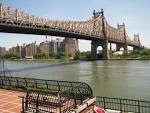
Queensboro Bridge |
Queensboro Bridge In 1909, the first significant double-deck bridge in the U.S. was opened to traffic. The Queensboro Bridge is one of the greatest cantilever bridges in the history of American bridge design. A collaboration between the famed bridge engineer Gustav Lindenthal (1850-1935) and architect Henry Hornbostel, the Queensboro's massive, silver-painted trusses span the East River between 59th Street in Manhattan and Long Island City in Queens. The opening of the Queensboro Bridge was one of, if not the, most important feature to stimulate the continuing development of Long Island City and Queens in general. Before it, Long Island City was isolated and unevenly developed. |
|
06 Apr 1909
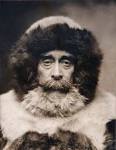
Robert Peary |
Robert Peary (earth sciences) Robert Peary, Matthew Henson, and four Eskimo explorers come within a few miles of the North Pole. |
|
13 Apr 1909
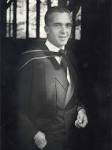
Mervyn Hugh Cowie |
birth Mervyn Hugh Cowie Born 13 Apr 1909; died 19 Jul 1996 at age 87. British wildlife conservationist who was the founder and, for 20 years, director of Kenya's Royal National Parks; he also assisted in the development of parks and tourism throughout East Africa and was appointed CBE in 1960. |
|
13 Apr 1909

Stanislaw M. Ulam |
birth Stanislaw M. Ulam Born 13 Apr 1909; died 13 May 1984 at age 75. Polish-American mathematician who played a major role in the development of the hydrogen bomb at Los Alamos. He solved the problem of how to initiate fusion in the hydrogen bomb by suggesting that compression was essential to explosion and that shock waves from a fission bomb could produce the compression needed. He further suggested that careful design could focus mechanical shock waves in such a way that they would promote rapid burning of the fusion fuel. Ulam, with J.C. Everett, also proposed the "Orion" plan for nuclear propulsion of space vehicles. While Ulam was at Los Alamos, he developed "Monte-Carlo method" which searched for solutions to mathematical problems using a statistical sampling method with random numbers. |
|
13 Apr 1909
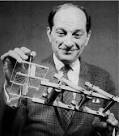
Stanislaw Ulam |
birth Stanislaw Ulam Stanislaw Ulam (died 1984), Polish American mathematician. |
|
22 Apr 1909

Rita Levi-Montalcini |
birth Rita Levi-Montalcini Rita Levi-Montalcini (died 2012), Italian Jewish neurologist, recipient of the Nobel Prize in Physiology or Medicine. |
|
07 May 1909

Edwin H. Land |
birth Edwin H. Land Edwin H. Land (died 1991), American inventor and founder of Polaroid. |
|
26 Jun 1909

Science Museum (London) |
Science Museum (London) The Science Museum (London) is established as an institution in its own right. |
|
11 Jul 1909
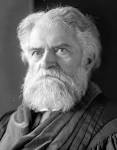
Simon Newcomb |
death Simon Newcomb Simon Newcomb (born 1835), astronomer. |
|
15 Jul 1909
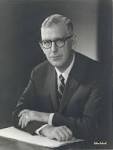
William Gemmell Cochran |
birth William Gemmell Cochran Born 15 Jul 1909; died 29 Mar 1980 at age 70. Scottish mathematician and statistician. |
|
23 Jul 1909
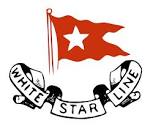
White Star Liner |
White Star Liner (technology) White Star Liner RMS Republic (15,400 tons), sinking following a collision off Nantucket, becomes the first ship in history to issue a CQD distress signal, using Marconi wireless telegraphy. |
|
25 Jul 1909

Louis Bleriot |
Louis Bleriot (technology) Louis Bleriot is the first man to fly across the English Channel in a heavier-than-air craft. |
|
01 Aug 1909
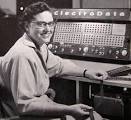
Sibyl M. Rock |
birth Sibyl M. Rock Sibyl M. Rock (died 1981), American mathematician. |
|
10 Aug 1909
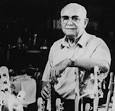
Leo Fender |
birth Leo Fender Born 10 Aug 1909; died 21 Mar 1991 at age 81. American inventor and manufacturer of electronic musical instruments, including the first solid-body electric guitar to be mass-produced: the Fender Broadcaster (1948, renamed the Telecaster two years later). He was an electronics enthusiast and radio repairman who got involved with guitar design after guitar-playing customers kept bringing him their external pickups for repair. Before Fender came along, guitarists met their amplification needs by attaching pickups to the surface of their hollow-bodied instruments. The Stratocaster (1954), had a flashier, contoured, double-cutaway body, with three (as opposed to two) single-coil pickups and a revolutionary string-bending (tremolo) unit. It became a much favored model of rock guitarists. |
|
14 Aug 1909

William Stanley |
death William Stanley William Stanley (born 1829), inventor. |
|
24 Aug 1909

Panama Canal |
Panama Canal In 1909, workers poured the first concrete for the Panama Canal at a lock site at Gatun. Finishing all the locks there took nearly four years. A dam holds back the artificial Gatun Lake to supply water for the locks. The Gatun gate was closed on 27 Jun 1913, allowing Gatun Lake to fill to its planned depth. A few months later, on 26 Sep 1913, the tugboat Gatun made a trial run through the Gatun Locks. The control panel was not ready for the event, so the locks were operated manually. Everything worked perfectly. The Panama Canal crosses the Isthmus of Panama, joining the Atlantic and Pacific Oceans. Built 1904-14, it is only half the length of the Suez Canal. Unlike the Suez, the Panama Canal uses locks to raise and lower ships. |
|
27 Aug 1909

Emil Christian Hansen |
death Emil Christian Hansen Emil Christian Hansen (born 1842), fermentation physiologist. |
|
30 Aug 1909
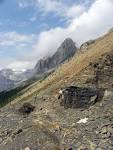
Burgess Shale |
Burgess Shale (paleontology) Discovery of the Burgess Shale Cambrian fossil site in the Canadian Rockies by paleontologist Charles Walcott of the Smithsonian Institution. |
|
14 Sep 1909

Sir Peter Scott |
birth Sir Peter Scott Born 14 Sep 1909; died 29 Aug 1989 at age 79. Sir Peter Markham Scott, son of Robert Falcon Scott (Scott of the Antarctic), was a British naturalist, conservationist, artist, and author. He was a founder of both the Severn Wildfowl Trust (1946, now renamed as the Wildlife and Wetlands Trust) and the World Wildlife Fund. From 1953 to 1970 he hosted the environmental television series Look for the British Broadcasting Corporation. (In 1978, he gave the Loch Ness Monster a scientific name, Nessiteras rhombopteryx. Scottish Member of Parliament Nicholas Fairbairn later anagrammed it: "Monster Hoax by Sir Peter S." ) |
|
14 Sep 1909

Peter Scott |
birth Peter Scott Peter Scott (died 1989), English conservationist. |
|
08 Oct 1909
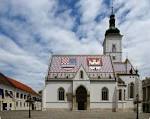
Zagreb |
Zagreb (earth sciences) An earthquake in the Zagreb area leads Andrija Mohorovičić to identify the Mohorovičić discontinuity. |
|
24 Nov 1909

Gerhard Gentzen |
birth Gerhard Gentzen Gerhard Gentzen (died 1945), German-born mathematician. |
|
12 Dec 1909

Karl Krumbacher |
death Karl Krumbacher Died 12 Dec 1909 at age 53 (born 23 Sep 1856). German scholar who developed the modern study of Byzantine culture. His writings and seminars were the basis for the specialized training of Byzantine scholars from all parts of the world. His Geschichte der byzantinischen Literatur (1891; "History of Byzantine Literature") went through several revisions. In 1892 he founded the periodical Byzantinische Zeitschrift ("Byzantine Journal"), which became the central international organ for Byzantine studies. |
|
14 Dec 1909

Edward Lawrie Tatum |
birth Edward Lawrie Tatum Edward Lawrie Tatum (died 1975), American geneticist, recipient of the Nobel Prize in Physiology or Medicine. |